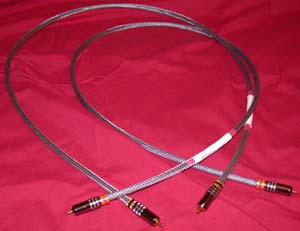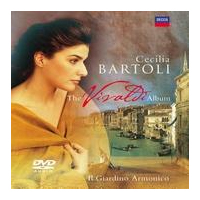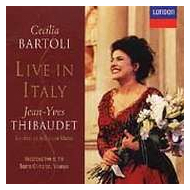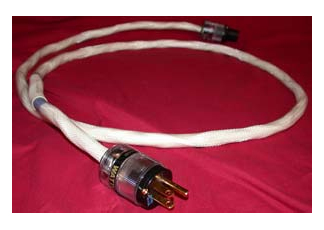You are reading the older HTML site
Positive Feedback ISSUE
17
january/february 2005
argent audio
Pursang and Brujo cables
as reviewed by Marshall Nack

|
MARSHALL NACK'S SYSTEM
LOUDSPEAKERS
ELECTRONICS
SOURCE
CABLES
ACCESSORIES
|
I've been thinking about the acoustic differences between two New York City venues, Carnegie Hall and the Metropolitan Opera House at Lincoln Center. Having recently attended the Met to hear Rusalka, a late-period Dvorak opera, the sound is fresh in my mind. Anything late-period Dvorak is good music, and with Renée Fleming in the title role supported by the Met Opera Orchestra under Andrew Davis, the composer was proudly served. Not long after, I heard Renée in an intimate evening of Schubert lieder with James Levine accompanying on piano, this time at Carnegie Hall (Levine is usually on the podium before the Metropolitan Opera Orchestra or the Boston Symphony. He is a fair pianist). While it was the same voice and many of the same notes, Renée sure didn't sound the same.
Carnegie Hall is world-famous for it's warm, smooth, transparent sound. It's the gold standard for well-developed bloom. Among other things, that bloom contains a lot of high frequency overtones. The hall is horseshoe shaped, with a large, tiered balcony rising well above the stage—that's where you'll find all the cheap seats. Being in the audience at Carnegie feels comfortable—you can easily gauge distances whether sitting in the orchestra or balcony.
Unlike the feeling you get at the Metropolitan Opera House, which is vast. It takes a while to orient your self in this space, like visiting the Grand Canyon. (The first day I visited the Canyon, I found it impossible to comprehend the distances). The walls are so much further away and there's nothing like Carnegie's high-domed ceiling. As soon as I looked away from the stage I felt disoriented. This translates into a more direct, drier acoustic with amazing clarity and transparency. The hall contributes less to the sound: the decay is shorter and there's less bloom at the Met. It also seems to have a smaller dynamic range. I hear less treble in the overtones at the Met—Renée sounded more mid-rangy here. I like Carnegie for orchestras; the Met is my venue of choice for sopranos.
While both halls are among the best-sounding venues in NYC, or anywhere for that matter, I like to dwell on their differences just to make the point that there are all kinds of "good sound" in real life. The idea that there's a single reference—an absolute sound—is a myth. My personal audio journey has been about refining the most appealing sounds I've heard into an amalgam that I carry around in my head, and then try to replicate in my sound room.
Warm Tone/Cool Temperament
Argent Audio's Pursang cables remind me of the Met. On first impression you feel you've entered a warm, very quiet, dark room, with terrific focus, great string tone, lots of weight, high palpability and high purity. These are quiet cables…very quiet. The degree of noise reduction, especially in the treble, is much greater than with most cables, which makes them a contender for one of the quietest cables around. In this capacity, the Pursangs' voicing reminds me of the top-line Shunyata products designed with noise reduction as a priority, or perhaps the Harmonix HS-101 wires with their special tuning and noise reduction.
The quietude is very noticeable and just when I was thinking it was too quiet, that possibly the treble was suppressed, a flute or triangle would come in and, by golly, it sounded fine: no problem with the top. With no frequency exaggerations, excess sibilance or breathiness, shortening or lengthening the decay, but exhibiting good tonal balance and accuracy, the Pursang turned out to be undemonstrative in every way, save one.
 Track 5 of The Vivaldi Album (London
289 466 569-2) begins softly with two solo violins. Soon a pair of
obbligato harpsichords join in, followed by the full Il Giardino
Armonico baroque string ensemble. The string tone of that violin pair is
excellent. It has the same bloom and acoustic quality as on forte
passages, which are managed quite well by the Pursang—there were few
instances of breakup on crescendos. (I betchya didn't know that even
wires factor into controlling breakup on loud passages.) But for the low
level signals to exhibit consistent quality with the louder passages is
already a feather in the Pursang's cap.
Track 5 of The Vivaldi Album (London
289 466 569-2) begins softly with two solo violins. Soon a pair of
obbligato harpsichords join in, followed by the full Il Giardino
Armonico baroque string ensemble. The string tone of that violin pair is
excellent. It has the same bloom and acoustic quality as on forte
passages, which are managed quite well by the Pursang—there were few
instances of breakup on crescendos. (I betchya didn't know that even
wires factor into controlling breakup on loud passages.) But for the low
level signals to exhibit consistent quality with the louder passages is
already a feather in the Pursang's cap.
We're lucky to have this virtue because mezzo-soprano Cecilia Bartoli enters VERY piano on this track. The song calls for an echo effect at the end of certain phrases to repeat the line. Cecilia does this almost in a whisper, below ppp, that sounds like it originates from behind her. I'm still wondering how this was done, because there's no audible break between the main line and the echo. Is it multi-tracking or some studio effect? Don't know. Like the piano strings of the Il Giardino Armonico ensemble, Cecilia exhibits excellent articulation and vibrato technique. The Pursang's micro-dynamic shadings and control are impressive.
With plenty of flesh, notable warmth and sweetness, the treble is sufficiently extended and nuanced, but you won't find any harshness. Instead, you'll find it rounded and soft edged. Notes are very pure and have a nice, solid center. Cables do vary on this—some are hollow at the core of the note, with all the sound on the periphery of the sound image. Others, like the Pursang, have a dense center. Notes begin with a soft-edged transient and a focused image, continue through the sustain, then trail off—the musically centered quality and the purity are always there.
Most cables image wider in the lower frequencies, normalize in the middle, and then get skinny in the treble. The best cables do this to a lesser degree. The Pursang is unique in my experience in that it has the same degree of fleshiness and image width from top to bottom of the frequency spectrum—all the frequencies stack up one on top of the other. And the flesh is firm and taut. Now factor in the cables' unusually high-powered focus and you'll understand why they conjure up mental pictures of vertical sound objects in an approximation of a cylinder shape. These cylinders array themselves dimensionally across the width and depth of the stage. Ah, I suppose you're thinking, it's time to get a grip, no?
That strong focus can come across as spotlighting, which can seem like an attractive thing because it heightens your view of the soundscape, separating everything out, and so requires less work on your part. I just listened to Le Carnaval des Animaux, by Camille Saint-Saens (Virgin Classics 45603 2). The ensemble of young, up-and-coming European musicians play aggressively, especially the piano on the right side, but it still ranks as one of the best renditions of this ever-popular composition. I did enjoy the clarity and disclosure of individual lines: the spot-miking lets you peak right into the score. But don't loose sight of the fact that it ain't natural. The effect is mitigated in the Pursang because leading transients are rendered so well—they have a soft edge and excellent frequency coherency.
The Pursang is warm in tone, but cool in temperament. The treble doesn't get excited; the bass is full but not ostentatious.
Quiet Now and Relax
 For a more relaxed mood, pick up
another Cecilia Bartoli recording, LIVE in ITALY (London 289 455 981-2).
Wow, she is sweet and articulate, communicating with no strain, like her
job is a piece of cake. I bet this is the impression you'd get if you
heard her in person. There's lots of power along with the sweetness in
her voice. On track 1, I'm struck by how distinctly and clearly the archlute enters on the right and fades, with just the right balance
between plucked and resonant string sounds. When the ensemble comes in a
minute later, the pace seems to pick-up, but it really hasn't. You'll
know it's the same tempo if you tapped your foot to the music or had a
metronome on. I'm even more surprised at the pace on track 3—I almost
feel like checking for correct speed setting, as if it were an LP. The
good PRAT (Pace, Rhythm and Timing), the warmth and the weight promote
the feeling of humans at work making music.
For a more relaxed mood, pick up
another Cecilia Bartoli recording, LIVE in ITALY (London 289 455 981-2).
Wow, she is sweet and articulate, communicating with no strain, like her
job is a piece of cake. I bet this is the impression you'd get if you
heard her in person. There's lots of power along with the sweetness in
her voice. On track 1, I'm struck by how distinctly and clearly the archlute enters on the right and fades, with just the right balance
between plucked and resonant string sounds. When the ensemble comes in a
minute later, the pace seems to pick-up, but it really hasn't. You'll
know it's the same tempo if you tapped your foot to the music or had a
metronome on. I'm even more surprised at the pace on track 3—I almost
feel like checking for correct speed setting, as if it were an LP. The
good PRAT (Pace, Rhythm and Timing), the warmth and the weight promote
the feeling of humans at work making music.
Honest, that's how the Pursang strikes me. There's that clarity and control I hear at the Met Opera House, except that the singer in my living room is louder, a bigger, more powerful image. The Pursang have much less glitz or spin than your average high-end cable.
Music flows effortlessly after things quiet down. And definition is excellent. These cables manage to have as good information retrieval as the best I've heard and present it in a most relaxing manner… a very rare combination of virtues. Curious how they have such good focus and detail, yet sound easy-going and relaxed. The Pursang take the edge off, no matter how loud the playback. Sometimes dynamic peaks come close to break-up, but don't—sure Cecilia sounds less sweet at these times, with a hint of edge, but undistorted. The Pursang greatly reduced the remnants of digititus on massed strings, which was especially annoying at loud volume. And they allowed a peek at the complexity of massed strings. That is, a string section sounded like a group of musicians, not one large, homogeneous string sound. Again, uncommonly fine retrieval of the sound-pixels that comprise these phenomena. I'm surprised by the nuance I'm hearing, but there is a downside: at more moderate SPLs, instruments lose some of their edge. Brassy instruments sound wonderfully warm, full-bodied, dynamic, but could use some more bite on their rims.
Cable Comparisons
I always want to know how one cable sounds in comparison to other well-known brands; after all, "a better educated consumer is our best customer," as the advert has it. It gives you perspective.
Harmonic Tech Magic wires have crisper transients. The start of the note has more drama—there's more of that edge and more ambience. However, the HT has a habit of spreading at the tail end as the note decays. The Pursang has great control here in the temporal domain, just like it controls the fleshiness of the entire frequency spectrum. Remember the cylinder image?
 The Argent Brujo HC power cord's tonal
balance is along the lines of the bulky Harmonic Tech Magic PC, lighter
than the Harmonix X-DC Studio Master or the Golden Sound Red—two of the
weightier PCs on the market—but darker than the GS Blue model. The GS
cords are a bit more lush with less control: the Harmonix is good on
control and has even more solid, palpable images.
The Argent Brujo HC power cord's tonal
balance is along the lines of the bulky Harmonic Tech Magic PC, lighter
than the Harmonix X-DC Studio Master or the Golden Sound Red—two of the
weightier PCs on the market—but darker than the GS Blue model. The GS
cords are a bit more lush with less control: the Harmonix is good on
control and has even more solid, palpable images.
The Pursang S speaker cable (the "S" signifies a premium cable comprised of a double run of the regular Pursang) is darker and fuller than the HT Magic, but lighter and less lush than the Analysis Plus Gold. The fleshiness of the Pursang has a different quality than the bloom of the AP Gold, although they are both mid-rangy and weighty. The AP Gold has a large overtone envelope surrounding the note—you can discern this acoustic aura apart from the fundamental—and it is always present. The Pursang S is a rich sounding cable, but the overtones are integral with the note—you can't separate them from the principal. Rounding out the picture, the Pursang interconnect comes in tonally like the Stealth GS-50-50, a little weightier and darker than the HT Magic interconnect or the Kharma Enigma. These other cables have more treble overtones. The Enigma, in particular, has incomparable openness and expression on top.
Which raises a question about the one thing that's remarkable about the Pursang—the very high purity, which was noticeable from the git-go. Some wires accomplish this by shorting the overtone complement along with their noise reduction, resulting in a "pure" sound, but one that is incomplete. Does the Pursang simplify? If you rig up your system with these wires, no doubt you'll have great sound—I did and I would describe it that way. But, compared to the best I know of in this regard, does it simplify? Yes. The best wires come in richer on top.
Cosmetics and Construction
As a nice touch, the designer, Ric Cummins, autographs the outer jacket of each cable by hand. By the way, the signature indicates directionality; the side with the autograph goes towards the source. All of the cables are physically thin and lightweight, but stiff—you have to shape them to fit, no sharp turns here. The interconnect and digital cables are the most flexible. Encased in translucent pearl webbing over a black sheath, the net effect is a grey color. They use locking RCAs that, I was informed, were carefully chosen for their sound. However, their action was often not smooth when attaching or removing them.
My binding posts easily deformed the spades on the speaker cable—I would have liked bigger, heavy-duty ones. Solder is visible where the spades meet the plastic covering the pigtails, and the pigtails themselves have an ungainly looking heat-shrink plastic covering where they join together. The two conductors are encased in one white-sheathed wire, and were quite stiff.
Small gauge silver conductors are used for the interconnect and larger gauge silver conductors for the speaker wire because "these wires are moving current: interconnects move voltage." Here's some design details from the website: "…(the) Pursang cables benefit from not only increased damping but from an entirely new materials technology. We have developed a unique material that greatly accelerates the capacitive discharge of all non-conductive materials within the cable."
The Brujo power cord looks and feels much like the Pursang S speaker cable. It is terminated with a Wattgate IEC and a Leviton AC plug. Like the others, it is hand-made, and it shows in the incomplete closure of the Leviton AC plug halves and the ungainly heat-shrink wrap where it enters the plug.
More on the Brujo power cord from the website: ‘Using only passive, parallel filtering with this construction… eliminates the need for the multistage series filters employed in other cords. (No) woven metal shields that make the sound seem "closed-in", opting instead for a unique carbon-saturated PTFE for the purest transmission of the AC signal…' A single low-value parallel capacitor is the only filtering. The topology provides the rest of the filtering. Brujo power cord features include; all silver wire; carbon-saturated PTFE Teflon shielding on the outside of the conductor; aphasic Non-Parallel Topology. Some of the features of the speaker cable and interconnects include; asymmetric field; non-parallel, aphasic-field weave; TPFE dielectric and core.
In general, the wires reflect their hand-made origins. Build quality is functional—adequate to do the job. It could be better at these price points. The wires come packaged in Hefty Ziploc plastic bags.
Conclusion
Warm, a little smooth and a little dark, with big, full-bodied images, the Argent Audio Pursang is a sophisticated cable line. They are accurate, but also musical and liquid, with terrific focus and excellent string tone. The Pursang tames one of the most common problem areas in high-end audio, namely treble noise. While we have lots of purported solutions for this at our disposal, few are as successful—most of the treble cleansers introduce more issues than they solve.
The Pursang are sold factory direct: you provide a credit card number and the cables are shipped. After a reasonable trial period has passed, your card is charged.
In their price class, the interconnect at $950/36″ and the digital cable at $500/30″, are best buys. The closest contenders I know of are priced at least 30% more. The loudspeaker cable at $2750 and the Brujo PC, however, face significant competition.
Retail prices:
Pursang Interconnect cable
36" - $950
Pursang Digital cable 30" - $500
Brujo HC Power
Cord - $160/ft + $90
Optional cryogenic treatment - $25
Pursang S Loudspeaker cable 8
foot - $2750
Argent Audio
email address:
[email protected]
web address:
www.roomlens.com
